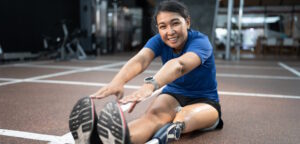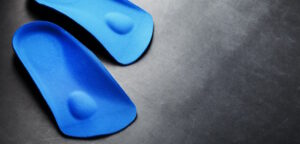And Where to Find Advanced Orthotics and Prosthetics Near You
When we think about the greatest success stories in the field of advanced prosthetics and orthotics, our mind jumps to famous athletes such as Jeremy Campbell, Kelly Cartwright, and Amy Purdy.
Jeremy Campbell, for instance, suffered from a birth defect that caused him to be born without a fibula in his right leg. He would later go on to set a Paralympic world record in the discus by recording a throw of over 62 meters.
Whereas Campbell was born with his disability, other athletes, such as Kelly Cartwright, dealt with theirs later in life. Cartwright was diagnosed with cancer in her right knee, which resulted in an above-the-knee amputation. Using an advanced prosthetic leg, she went on to break records at the 2012 London Paralympics in the long jump and 100m events.
Although a disability such as an amputation certainly means future mobility will be a challenge, it doesn’t have to mark the end of an individual’s athletic endeavors. Disabled athletes like Campbell and Cartwright can attest to that. The secret is determination and the usage of advanced prosthetics and orthotics, such as below-the-knee prosthetic legs.
How are prosthetic legs for athletes different from the ones used for daily wear? Let’s break this down.
Above-the-Knee Prosthetic Legs and Below-the-Knee Prosthetic Legs Intended for Daily Wear
Before diving into the topic of prosthetics for athletes, it helps to set a baseline by reviewing prosthetic legs that are intended for daily wear. First, there are two types of prosthetic legs – below-the-knee and above-the-knee.
A below-the-knee prosthetic indicates that the user has an amputation of the leg that’s below the knee, which leaves the joint intact. An above-knee prosthetic indicates the user has an amputation above the knee, which means their prosthetic leg likely uses an artificial knee joint.
Characteristics of Advanced Prosthetics and Orthotics for Athletes
It’s important to note that virtually all prosthetics require some kind of customization to appropriately fit them to the user. Additionally, as the residual limb changes in shape and volume, the prosthetic will need to be replaced or customized again to suit the wearer. Keeping that in mind, there’s a big difference between advanced prosthetics and orthotics for athletes when compared to daily wear prosthetics.
The most discernible difference is the amount of customization that must be done for a prosthetic that will be used for athletic endeavors. When moving at a high speed, there’s less margin for error when considering things like gait, balance, and bearing weight. Several rounds of customization and testing may need to be performed before the motion and functionality of the prosthetic feel right.
Additionally, advanced prosthetic legs for athletics are usually built from more durable materials that can handle increased exertion. They also may feature a hydraulic knee joint that uses pistons, sensors, or programmed movements that are controlled by a computer within the prosthetic leg.
Of course, due to the advanced nature of those prosthetic limbs and the amount of customization that goes into them, athletes could expect to incur some additional expenses with their unique prosthetic leg. Advanced prosthetics and orthotics designed for athletic use generally aren’t typically covered by insurance, which can result in some out-of-pocket costs.
How to Find Orthotics and Prosthetics Near You
The main advantage of working with Cotton Orthotic and Prosthetic Associates is that we have over 20 years of experience working in the field of advanced prosthetics and orthotics. This means that we’ve worked with a wide range of clientele and have outfitted countless individuals with prosthetic devices that allow them to reclaim their mobility and quality of life.
If you’ve been searching for prosthetics near you, the best way to see how our practice can help is by scheduling a consultation. We work with clients throughout their entire journey to help them acclimate and get the resources and training they need when using a new prosthetic device.
You can reach Cotton Orthotic and Prosthetic Associates by calling (913) 338-2672 or by emailing us directly using the contact form on our website.







